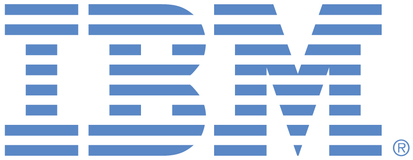
This portal is to open public enhancement requests for IBM Sterling products and services. To view all of your ideas submitted to IBM, create and manage groups of Ideas, or create an idea explicitly set to be either visible by all (public) or visible only to you and IBM (private), use the IBM Unified Ideas Portal (https://ideas.ibm.com).
Shape the future of IBM!
We invite you to shape the future of IBM, including product roadmaps, by submitting ideas that matter to you the most. Here's how it works:
Search existing ideas
Start by searching and reviewing ideas and requests to enhance a product or service. Take a look at ideas others have posted, and add a comment, vote, or subscribe to updates on them if they matter to you. If you can't find what you are looking for,
Post your ideas
Post an idea.
Get feedback from the IBM team and other customers to refine your idea.
Follow the idea through the IBM Ideas process.
Specific links you will want to bookmark for future use
Welcome to the IBM Ideas Portal (https://www.ibm.com/ideas) - Use this site to find out additional information and details about the IBM Ideas process and statuses.
IBM Unified Ideas Portal (https://ideas.ibm.com) - Use this site to view all of your ideas, create new ideas for any IBM product, or search for ideas across all of IBM.
ideasibm@us.ibm.com - Use this email to suggest enhancements to the Ideas process or request help from IBM for submitting your Ideas.

Hi Paul, thank you for the follow up. We do understand the use case, but have not seen this scenario as a requirement for many customers. If it has come up, one or more of the options suggested above were sufficient to meet the customers' needs. To support your main use case of blind returns at a DC, please consider one of the suggested options as a way to enable processing of the return in OMS.
The presence of the take sale data also assists with Order history / Order Details, and to facilitate the "un-blinding" process directly in Sterling, where transactions are searchable by known customer contact points, transaction timestamps, etc, in one harmonized interface.
As a cloud IBM customer, we prefer to stand up custom tables only as a last resort. We prefer the functions exist as first-class, recognized Sterling features.
Hi Paul, thank you for submitting your idea. This use case does come up for customers, and has been handled in multiple ways. In many cases, cross-channel customer purchase history (in store take-sales as well as online orders) is an important aspect of providing a robust customer experience, and retailers do load store purchases as orders in OMS. In order to mitigate quota impact, some customers choose to do this on demand by integrating with the store system to load the necessary data into OMS upon processing a return for a store purchase. A third option would be to store key take-sale data in a custom table in OMS to avoid quota impact and on-demand integration.
We will leave this idea for future consideration and see if additional interest is registered in the form of votes. Please consider some of the options mentioned above to see if they would work for your needs.